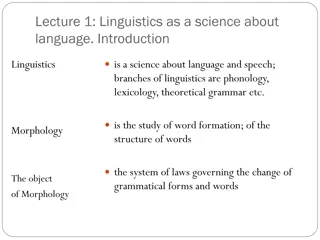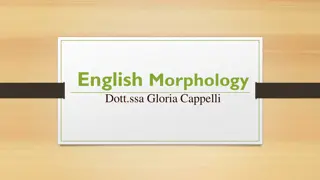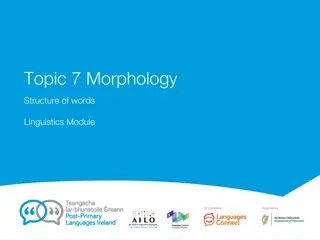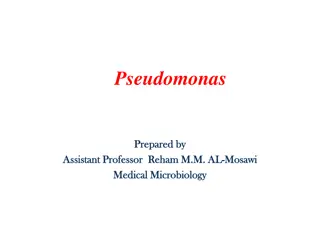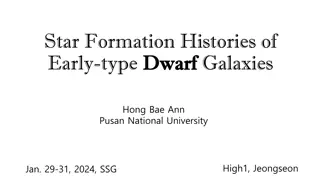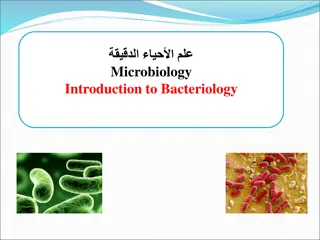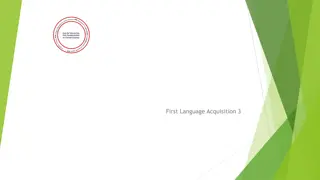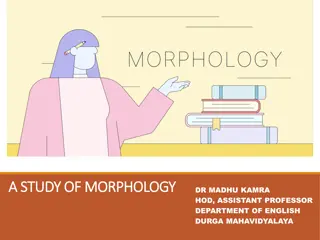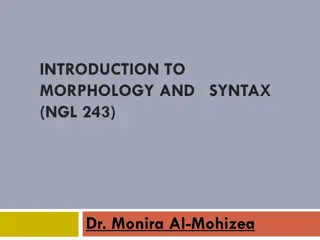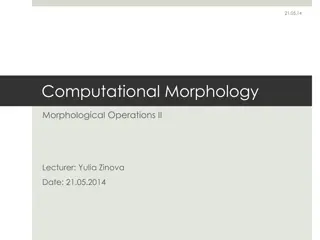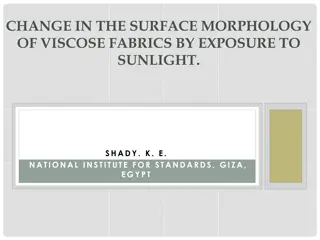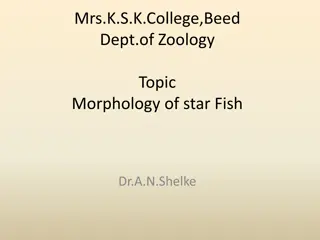WEEK3- MORPHOLOGY
the fascinating world of morphology in linguistics, delving into the concepts of linguistic symbols, lexicon, allomorphs, and word structure. Discover the classifications of morphemes, the significance of allomorphs, and the role of affixes in word formation processes. Unravel the intricacies of language through a deeper understanding of how meaning is constructed through morphological elements.
Download Presentation

Please find below an Image/Link to download the presentation.
The content on the website is provided AS IS for your information and personal use only. It may not be sold, licensed, or shared on other websites without obtaining consent from the author.If you encounter any issues during the download, it is possible that the publisher has removed the file from their server.
You are allowed to download the files provided on this website for personal or commercial use, subject to the condition that they are used lawfully. All files are the property of their respective owners.
The content on the website is provided AS IS for your information and personal use only. It may not be sold, licensed, or shared on other websites without obtaining consent from the author.
E N D
Presentation Transcript
WEEK3- MORPHOLOGY Dr. Monira I. Al-Mohizea
A Horse is. In Arabic it is called . In French it is called cheval . in English it is called horse . None of these is a better or worse way symbolizing the concept 'horse'. There is no principle that can enable us to determine which linguistic sign will have a particular meaning. The meanings of all morphemes and many words if have to be listed in our mental lexicon??, and memorized.
What is a Lexicon Formally, in linguistics, a lexicon is a language's inventory of lexemes. The vocabulary of a person, language, or branch of knowledge (mental).
Exception! In the case of onomatopoeia, where the word imitates some aspect of the meaning of the concept it represents (i.e. the formation of a word from a sound associated with what is named, e.g. cuckoo, sizzle). The linguistic sign is iconic and not arbitrary. But the iconicity is closely linked to convention, and arbitrariness. E.g. the sound imitative of a dog's bark is woof in English, hut, in Romanian ham ham, in Russian gaf gaf, in Estonian. The differences do not reflect any dialectal differences among canine (dogs) populations.
Classifications of morphemes Morphemes are classified as free or bound morphemes. a free morpheme can occur in isolation (as a word on its own). E.g. dog, write, deserve and child. a bound morpheme cannot occur in isolation, E.g. , the forms -ish, tin-, -ed, -1y, re-, -ing Any form that is used to represent a morpheme is called a morph . E.g. the word child-ish has two morphs.
Allomorphs Morphemes are represented by more than one form in different contexts. These variants are called allomorphs. Allomorphs are morphemes having the same function but different form. Unlike synonyms they usually cannot be replaced one by the other. Allomorphs are distinct with regard to form, but they have the same grammatical or semantic function. E.g. the indefinite article in English has two allomorphs: a is used if the next word starts with a consonant, e.g., leg, a mother, a tomato. an is used if the next word starts with a vowel, e.g., an ear, an egg, etc. They differ in pronunciation but are semantically identical. a 1.
Word Structure (affix, prefix, suffix) Starting off with the base write , we can add ing = writing -re +writing (base) + rewriting, etc. A base is a unit to which elements can be added in word-formation processes. Affix: is a bound morpheme (suffix/prefix) that must be attached to a base. i.e. a morpheme that is not a root?; it is always bound. a prefix precedes the base (e.g. prewash) if it follows the base it is called a suffix (e.g. writer)
Infix & Circumfix Infix: common in Austronesian and Austroasiatic languages (e.g. Tagalog, Khmer) In Tagalog: basa = read => b um asa read-past very rare in English: E.g. abso bloody lutely Circumfix: morphemes having two parts that are placed around a root. In Dutch: Berg = mountain => ge berg te mountains .
The base vs. the root The base is also referred to as a root. But, the root is the rump remainder of a word that remains when all the affixes have been stripped away (i.e. it is a nucleus of the word that affixes attach too). A base doesn't have to be a bare root. In many cases the base contains a root and one or more affixes; (e.g. rewrite) We can form a compound word by combining two bases (words in their own right) E.g. Ear+ witness = earwitness
What is a stem? In forming a word, a lexical base to which inflectional morphemes are attached (e.g. sleep=sleep-s) is called a stem.
Lexical vs. functional morphemes Two broad types of Morphemes: Lexical morphemes vs. functional morphemes
Lexical morphs Lexical morphemes: (Known as content words ) Lexical morphemes are nouns, adjectives, verbs and adverbs (NAVA words). This has an important consequences for morphology because lexical morphemes belong to an open class which can expand. Discuss??
Functional morphs Functional morphemes: Also called function words ) and they: Mostly signal syntactic relationships, & include prepositions (e.g. as - are free function morphemes), pronouns (e.g. his, her) and determiners (e.g. the, a, an). Functional morphemes belong to closed set that admits no new members (new prepositions, pronouns, and determiners are very rarely added to the language.
Important conclusion! It follows that the branch of morphology that examines the creation of new vocabulary items is primarily concerned with lexical morphemes
Word formation processes Two broad types of word formation processes: Inflection versus derivation Discuss the following: a. She sleeps. Othman sleeps *They sleeps lt sleeps b. *We sleeps *You sleeps
What is inflection? Inflection is syntactically motivated word-formation. Inflection creates various forms of the same word E.g. third-person singular subject of a present tense verb (e.g. he reads a book every night) E.g. Singular this boy (*these boy) those boys (*this boys) that boy (*those boy) those boys (*that boys) Plural
Inflection (1) English has a small number of inflectional morphemes. They are all suffixes. Discuss?? Inflectional suffixes form a closed set (i.e. the language no longer adds to its inventory of inflectional endings. (English used to have considerably more complex inflectional morphology). Inflection is syntax driven. Many inflectional processes involve agreement. (subject-verb- number- agreement??).
Some terms.. Genitive: In grammar denoting a case of nouns, pronouns, and adjectives ( in grammatical agreement with them) used to indicate a relation of possession or ation. associ
Exercise! Following the inflectional suffixes tables, think of other examples in English for nouns: Native irregular plurals vs. borrowed irregular plurals And for verbs: Regular vs. irregular And for adjectives: Comparative vs. superlative
Inflection (2) Inflectional properties may be inherent (a morpheme is associated with its properties regardless of context). E.g. Countable vs. uncountable nouns Hammer(s) *equipment(s)
Derivation Derivation is not motivated by the syntax, its role is to generate new lexical items. Derivation changing meaning Input Derived word Possible impossible Tell retell Do undo Derivation changing syntactic category Faith (noun) fierce (adjective) fiercely (adverb) sing (verb) singer (noun) faithful (adjective)
Discuss! Differences: Inflection vs. Derivation??
Inflection vs. Derivation Derivation tends to affects the meaning of the word, while inflection tends to affect only its syntactic function. Derivation tends to be more irregular and sporadic there are more gaps, the meaning is more idiosyncratic and less compositional, but inflectional morphology is mostly regular. E.g. all verbs take ing but we cannot say ( *yellowen) following (whiten and darken). Therefore, derivational processes tend to be more productive than inflectional ones. The boundary between derivation and inflection is often fuzzy and unclear. Discus with your partner & give examples
Complex words (containing a sequence of suffixes) such as, Sing-er-s. The derivational suffixes are nearer to the root (-er) whereas the inflectional plural s suffix is at the edge of the word.
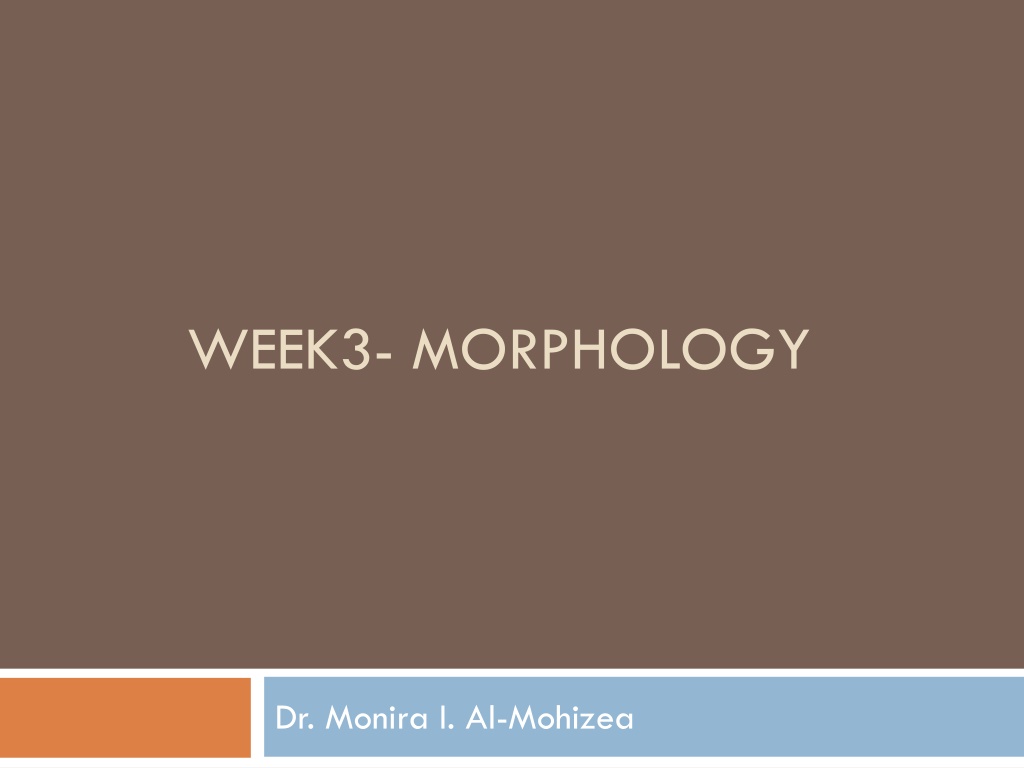
 undefined
undefined








